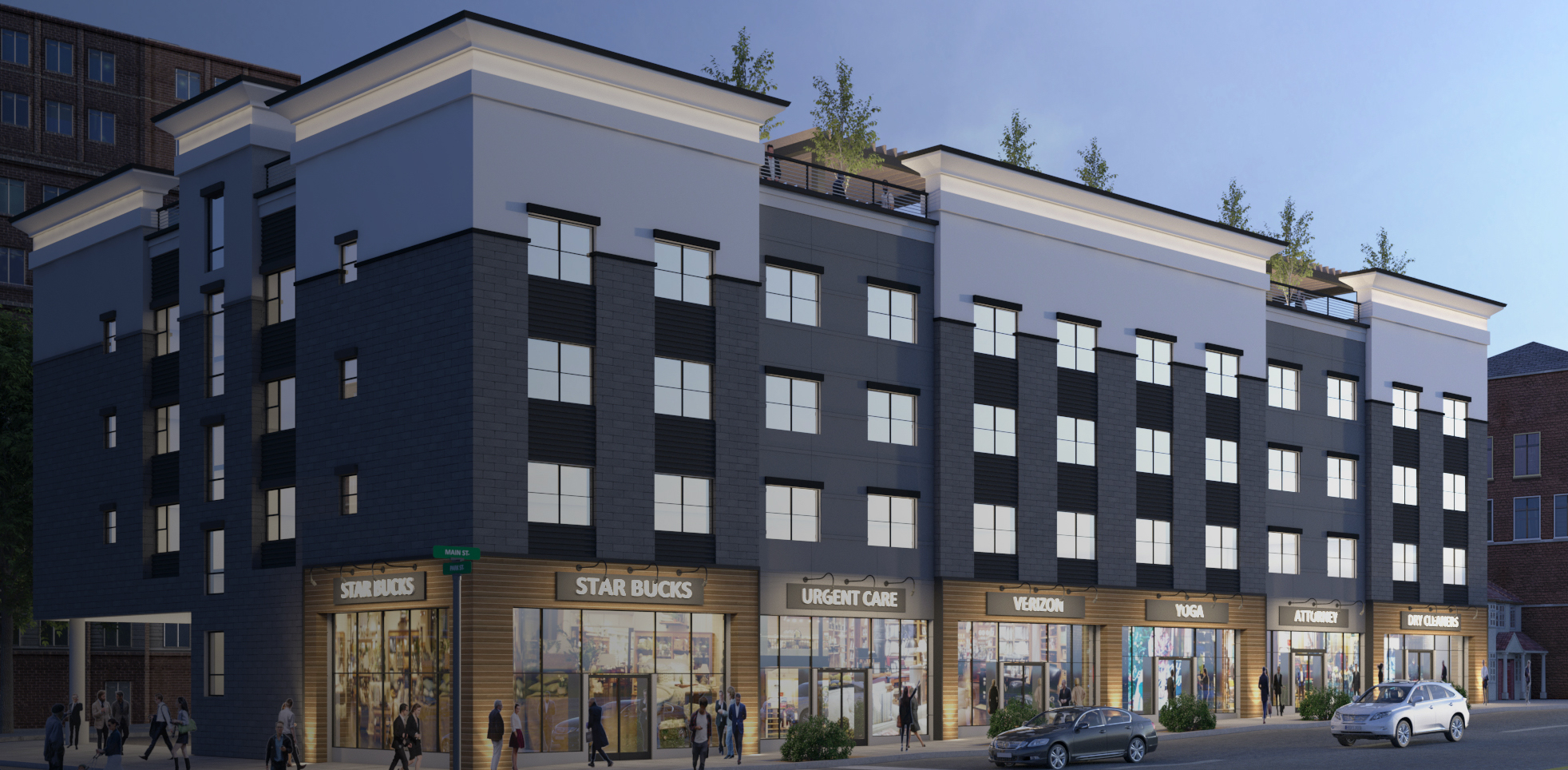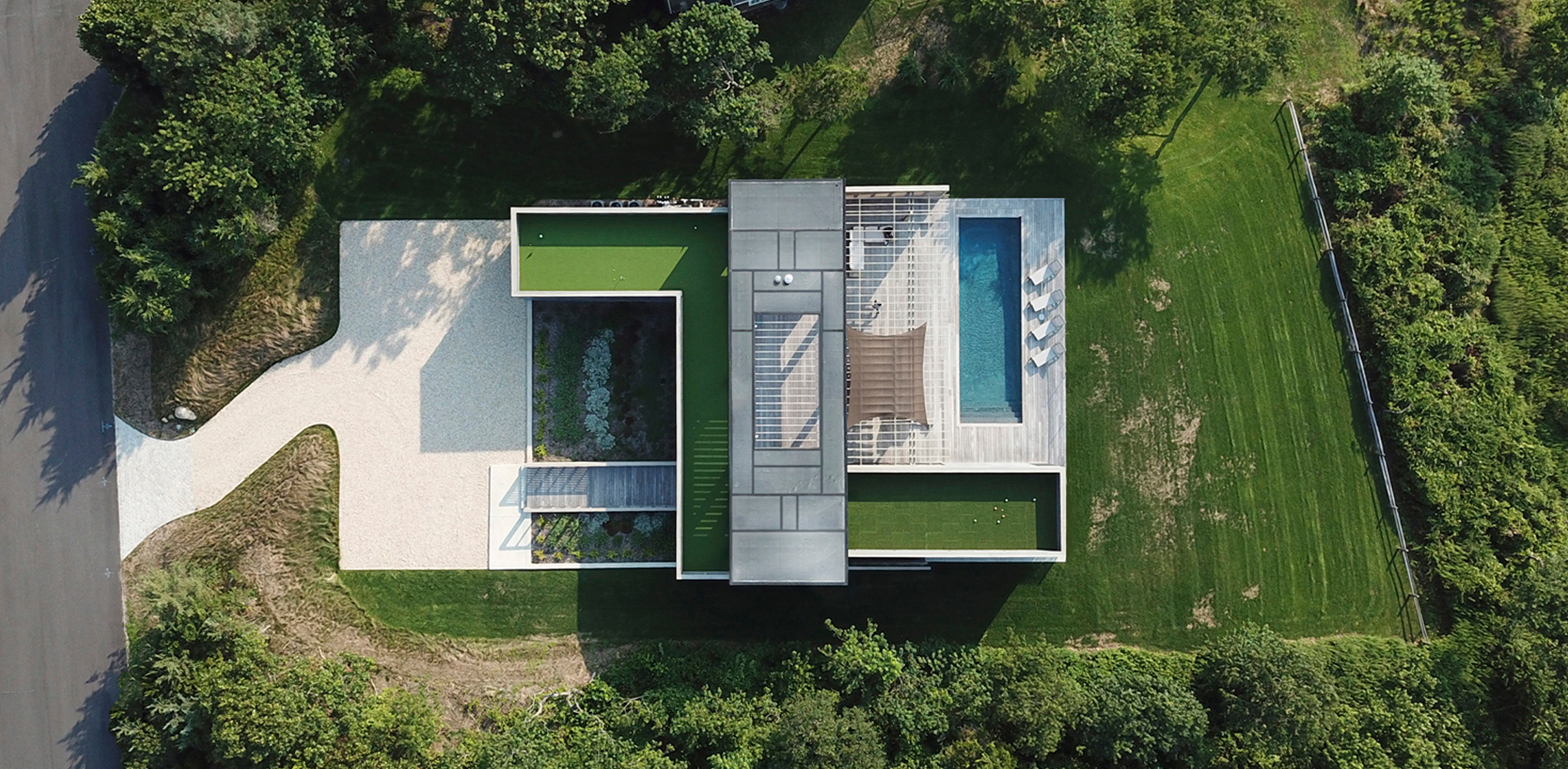Architects: Showcase your next project through Architizer and sign up for our inspirational newsletter.
Somewhere between building-architecture and landscape-architecture, the following projects seamlessly combine the two by bringing roofs to ground level and utilizing the ground plane to act as roof structures. Far from a novel visual trick, these projects all maintain the ground plane’s square footage as usable space. Instead of raising the building and casting a shadow onto the outdoor space left at ground level, or creating a difficult-to-access outdoor space on the roof, these projects all use the ground plane as a roof garden: open-space with natural light, above the building.
Treated like landscape projects, the materials used vary from grasses to flowers to wooden decking. The treatment of the ground plane is extended to the treatment of the roof-scape. It is this seamlessness that make these spaces accessible and inviting for their inhabitants and, in some instances, the general public too. The architects behind these projects all show a different take on the roof-scape typology, combining the benefits of both roof gardens and public plazas to blend nature and architecture together.
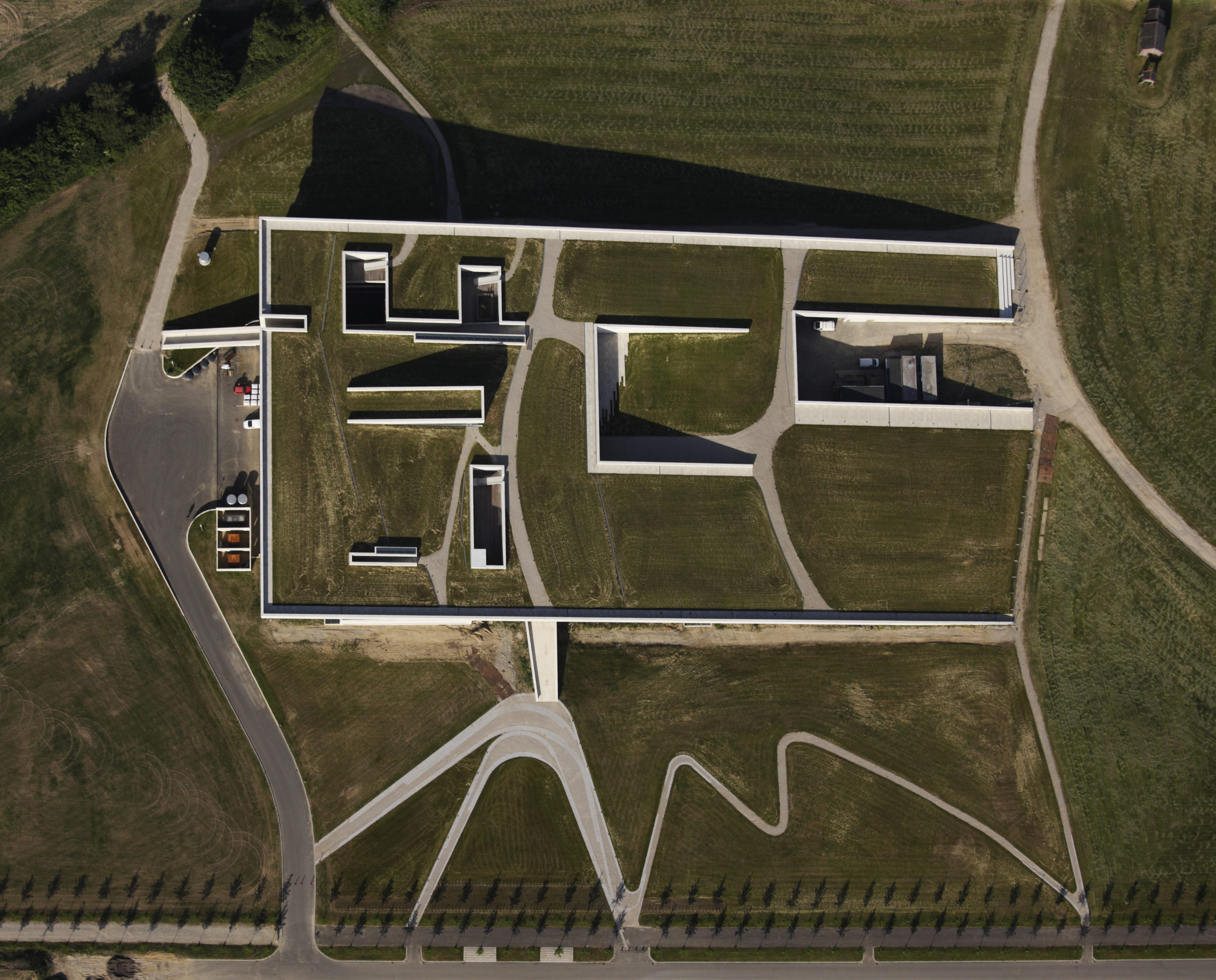
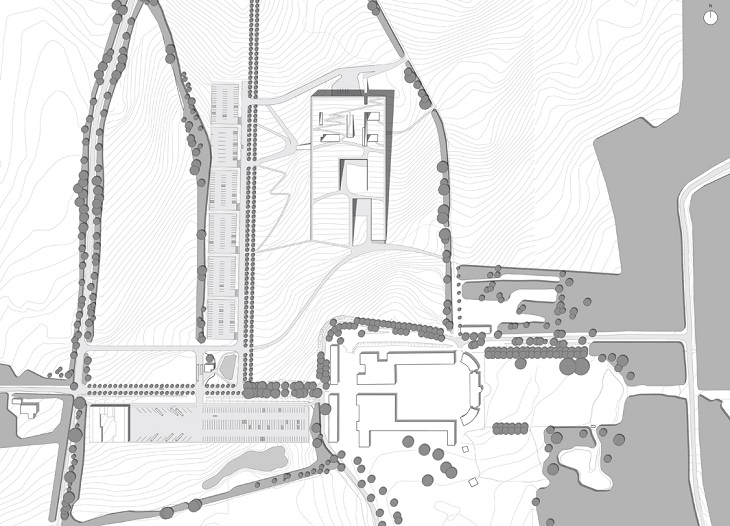

© Jens Markus Lindhe
Moesgaard Museum by Henning Larsen Architects, Aarhus, Denmark
The Moesgaard Museum blends with its natural landscape, seeming to grow out of the ground at a gentle inclination. The sloping roof-scape is planted with the same grasses, mosses and flowers as those which are found surrounding the site, making the 172,200-square-foot museum seemingly disappear into the landscape.

© Daria Scagliola/Stijn Brakkee


© Daria Scagliola/Stijn Brakkee
The Couch by MVRDV, IJburg, Netherlands
A tennis club house was designed by MVRDV to act like a piece of street furniture, completely accessible to the public and a place for social gatherings. The club house is an open, multi-functional space with its roof dipping down to meet the ground and provide an informal meeting place and spot from which to spectate tennis matches.

© Mecanoo

© Mecanoo
Library Delft University of Technology by Mecanoo, Delft, Netherlands
Designed to be the heart of Delft University of Technology’s campus, the library is as iconic as a building as it is a landscape. Mecanoo tilted the central lawn up and slid all the library functions into the spaces created beneath.

© Pereira Miguel Arquitectos

© Pereira Miguel Arquitectos
The Dune House by Pereira Miguel Arquitectos, Grândola, Portugal
In an attempt to make the most minimal intervention on the existing terrain, The Dune House was sited at the point with the easiest access: an old sand road. To maintain this point of access, the Dune House was placed between two artificial sand dunes on which the sand road was elevated and the living spaces placed below. The road acts simultaneously as an access point to the house and as its roof.

© BIG - Bjarke Ingels Group

© BIG - Bjarke Ingels Group
Gammel Hellerup Gymnasium Multi-Purpose Hall by BIG – Bjarke Ingels Group, Hellerup, Denmark
Gamble Hellerup High School commissioned BIG to create a multifunctional space for sports, assemblies and ceremonies in the school’s courtyard. To give the school the gymnasium and to maintain the courtyard as usable outdoor space, the architect placed the new facility below the ground level and created an undulating wooden roof that doubles as an outdoor deck.

© UAO.inc
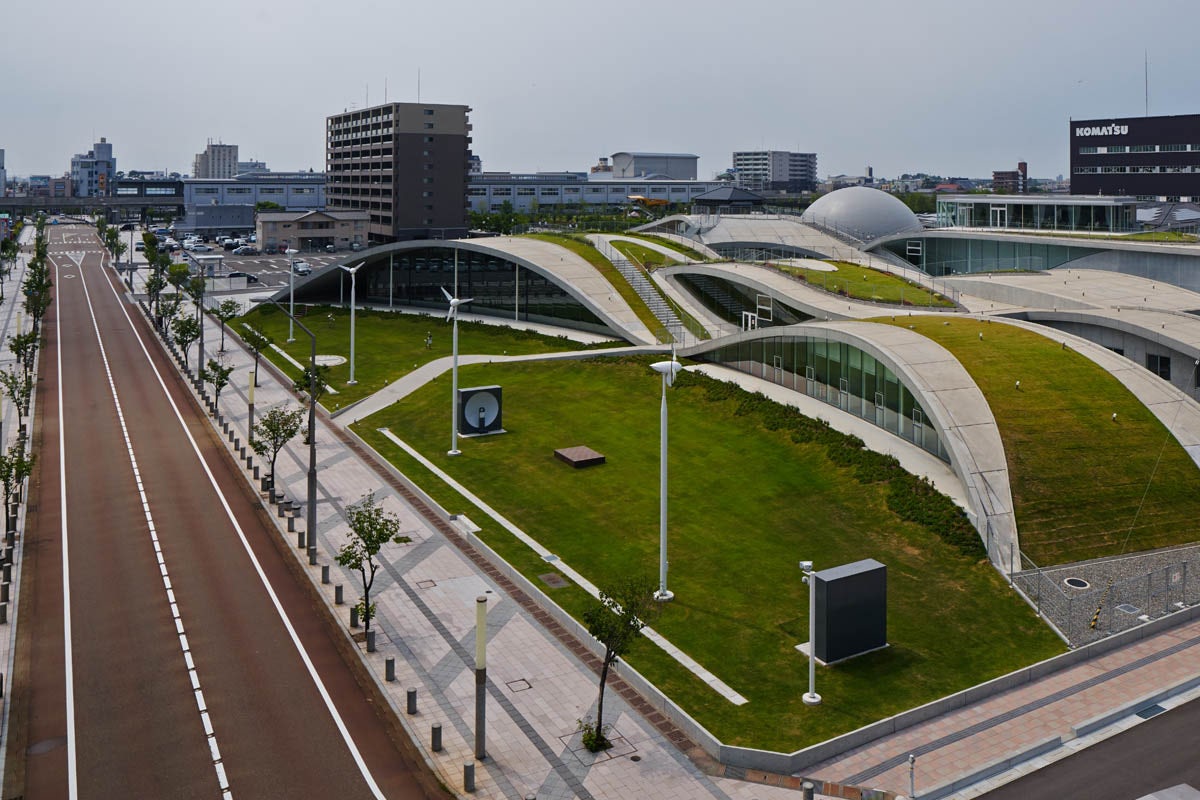
© UAO.inc
Science Hills Komatsu by UAO.inc, Komatsu, Japan
In order to make the science museum and communications center blend into the surroundings — primarily low-rise buildings — UAO.inc designed a similarly low-rise topography to house the program. Built under four “hills,” the Science Museum’s roof undulates to accommodate a 3D dome theater, a science experience-learning center and an incubation center.

© Scarcity and Creativity Studio


© Scarcity and Creativity Studio
Walk the Line by Scarcity and Creativity Studio, Ritoque, Chile
The Walk the Line project was designed as an adaptation of Le Corbusier’s House for an Artisan to the beach site. The living unit is small, with only enough space for a bed and desk, but the outdoor terrace extends for nearly 45 feet from a sand dune to create the roof of the shelter, terminating on two slim columns.

© longo+roldán arquitectos


© longo+roldán arquitectos
CAEaCLAVELES Residence + Hotel by longo+roldán arquitectos, Llanes, Spain
Designed to simultaneously preserve the integrity of the natural environment and to offer views to the forest and mountains that surround the land, the residence and hotel was designed to replace an existing hill on the site. Maintaining the same topography, the low-rise building is nestled under a gently curved roof that meets the ground at both ends.

© JDS ARCHITECTS
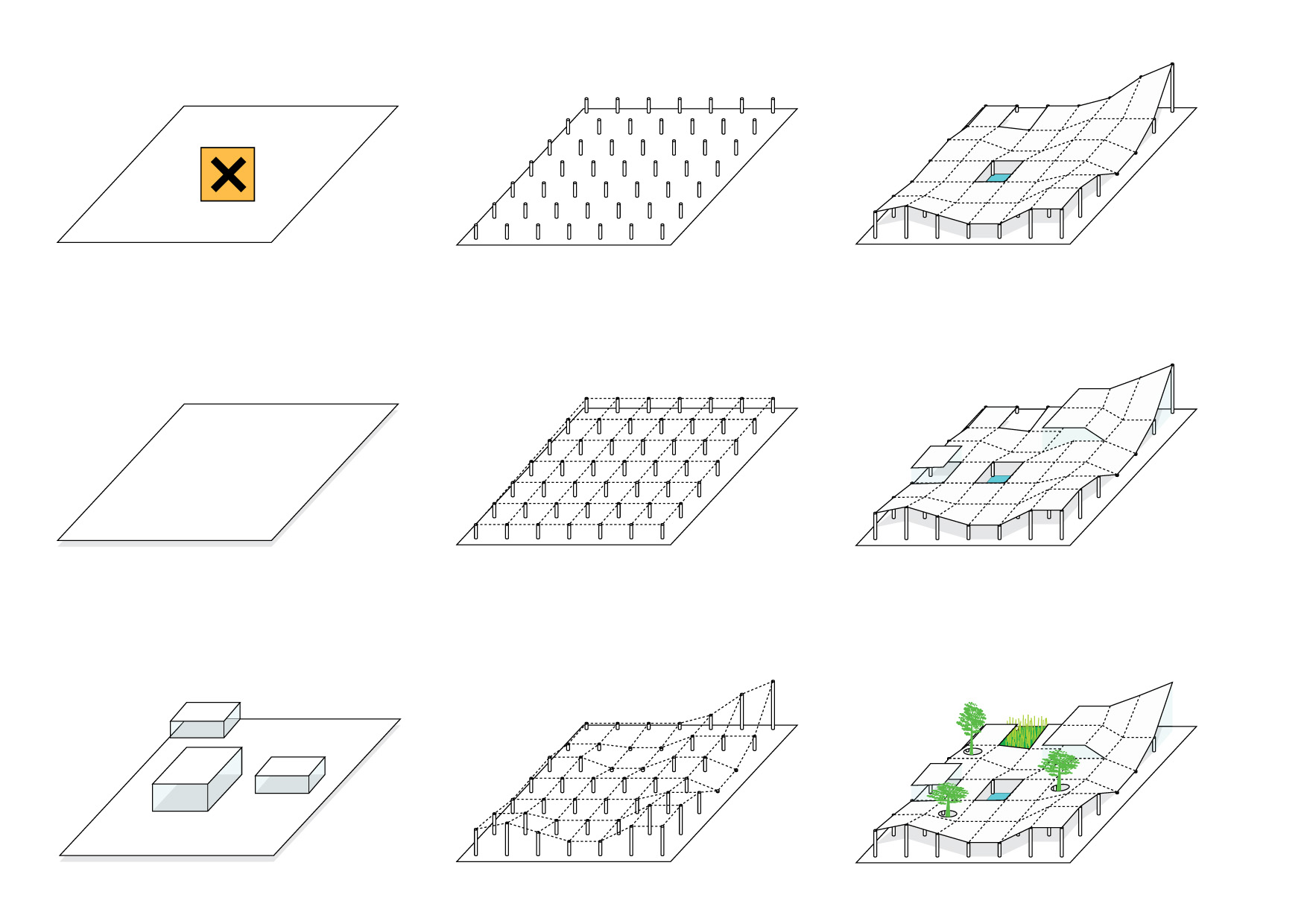

© JDS ARCHITECTS
Maritime Youth House by JDS/JULIEN DE SMEDT ARCHITECTS, Copenhagen, Denmark
Working on a site with polluted topsoil, JDS chose to cover the topsoil with an undulating wooden deck. The deck extends to create sloping, habitable roofs over boat storage and the building’s interiors.
Architects: Showcase your next project through Architizer and sign up for our inspirational newsletter.

